Posted on 1/10/2019 by Da-Lite Team
Director of Screen Technology, Tim Henson, describes his current role at Da-Lite as one “that looks out to the future and works on new technology.” Henson started working at Da-Lite in 1995 as a project manager. His first project was the Casio MegaVision Projector with a built-in rear projection screen. The Japanese projector company partnered with Da-Lite because of a well-established reputation for manufacturing high-quality projection screens and being industry innovators.
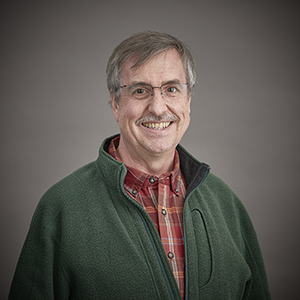
As AV technology evolved and trends shifted, so did the projects. Henson worked on everything from overhead projectors and LCD platens to InstaTheater portable screens while moving up the Da-Lite ranks. He’s managed both the Warsaw, Indiana and Blue Ash, Ohio facilities as well as the Engineering department. With the Milestone acquisition in 2011, Henson returned to a research and development role.
The overall goal of Da-Lite R&D is to develop projection materials that minimize some less desirable projector features, like speckle, while maximizing the best of advanced laser projection technologies and legacy LED, DLP, LCD projectors. “The projection screen is the last chance to make improvements to the image before it reaches the eye,” Henson explains. To paraphrase Kim Milliken’s Angles of View, he continues, “You can’t create more light. The screen can only change how the projected image enters your eye, by concentrating the light, defusing it or with special screen structure redirect unwanted light from other sources.”
Now, he’s most excited about the development of Da-Lite’s Parallax and Ambient Light Rejecting (ALR) surfaces. “Parallax surfaces look as good or better than flat panels. Two-piece projection is still the best way to achieve large images.” Other display technology is cost prohibitive in large sizes and hard to view due to reflections and glare, which isn’t a problem for Da-Lite ALR screens.
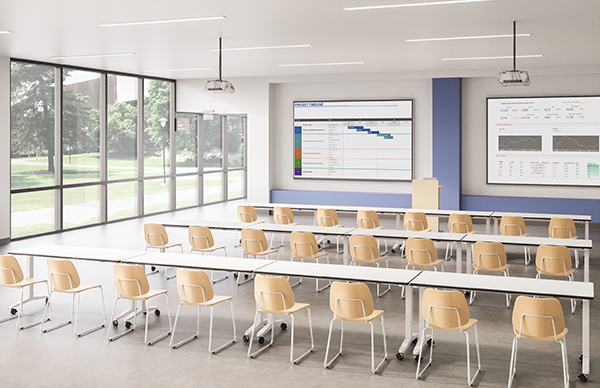
Fixed frame Parallax ALR screens look like flat panels, but without glare and reflections from light sources.
They offer more sizing flexibility than flat panels as well.
Parallax material is made of a micro-layered optical lens system. It does an excellent job capturing projected light and rejecting all other light while retaining wide viewing angles.
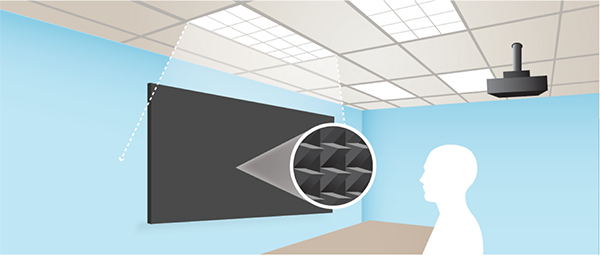
Illustrations of the microscopic saw-tooth layer that blocks light from above in Parallax 0.8 ALR surface
Parallax currently has one limitation however: size. The complex lens system can only be produced in films up to 120” diagonal. However, the Da-Lite team is constantly discovering and testing elements to invent new surfaces, so ALR screens can grow to meet the demands of large venue installations without sacrificing image quality.
“Our surfaces are unique because we have a staff of chemists to specifically develop them as needs in the market arise,” Henson explains. The team is on the verge of introducing an ALR surface that can be produced in sizes up to 16’ in height. This innovation will be available as tab-tensioned electric screens as well as fixed frame formats.
The next large screen challenge Da-Lite is checking off the list is unsightly surface seams. Invention sometimes involves not only coming up with an idea or product but also the equipment and process to create it. That’s how RF technology came to be used in Da-Lite manufacturing, replacing screen seams with “invisible welds.”
When most people think of welding, they imagine sparks flying off metal surfaces. RF welding technology uses High Frequency to excite the molecules in the screen at the weld site. The friction caused by the movement creates heat which is used to bond the two halves of the screen into one continuous fabric. The result? Surfaces as large as the imagination allows that are super flat and super strong.
Producing versatile, large-scale ALR surfaces is only one recent advancement though. Da-Lite is leading the way in the projection screen market with IDEA (Interactive Dry Erase Application) screens, providing a hot-spot free dry erase solution compatible with interactive projectors, and 16K-ready HD Progressive surfaces.
If you’re already a Da-Lite fan, you’ve heard a lot about the company’s long history, beginning in 1909 with Adele DeBerri. As Tim Henson prepares for retirement, he’s passing the baton to a new generation to carry that tried and true legacy forward.
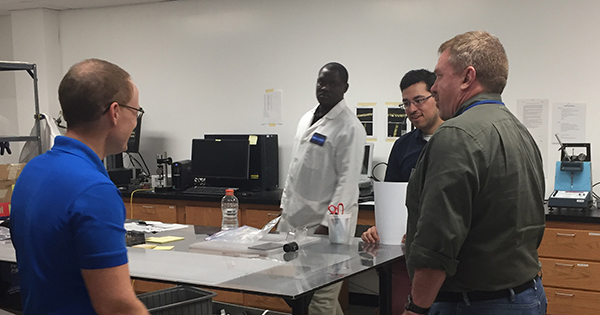
Members of the Da-Lite Blue Ash team discuss current projects
The teams in Warsaw and Blue Ash are building a solid foundation of scientific processes, standard operating procedures and rigorous testing methods. As Henson likes to say, “A pioneering spirit requires organic thought and ‘a-ha’ moments that can be applied to other areas of the business.” Teamwork is vital to continued success.
Henson has only one regret. “My career has ruined going to the movies! I spend more time noticing defects and thinking about how to improve the screen than watching the film!”
Like and follow Da-Lite to see how new product, features and industry innovations develop in the coming months!
Related News
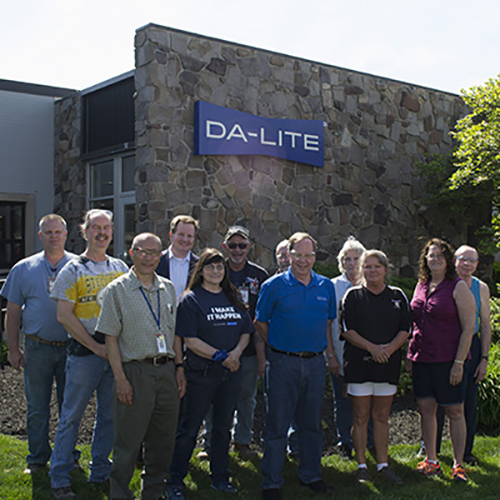 This blogpost series will cover continuous manufacturing improvements, technological advancements, and customer service diligence. The passion and dedication of Da-Lite employees is one of its best assets. We want to share that story with you.
This blogpost series will cover continuous manufacturing improvements, technological advancements, and customer service diligence. The passion and dedication of Da-Lite employees is one of its best assets. We want to share that story with you.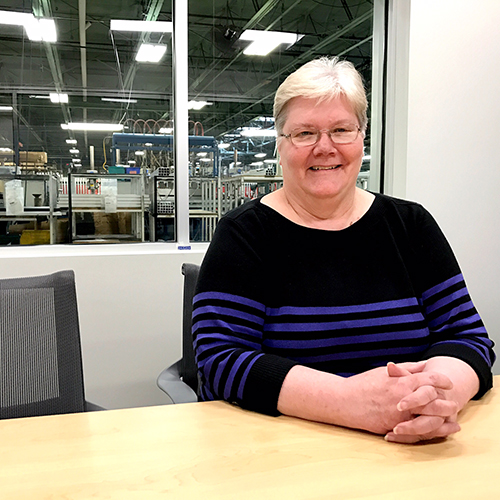 Kris Carney has helped create some of the most challenging solutions at the Da-Lite Design Center
Kris Carney has helped create some of the most challenging solutions at the Da-Lite Design Center

 All News
All News